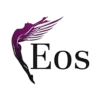Table of Contents
ToggleDiscover the top challenges of managing remote teams—plus proven strategies for improving communication, accountability, culture, and performance.
Remote work has transformed the modern workforce, offering flexibility, access to global talent, and often lower overheads. But managing a team that’s spread across cities—or even continents—introduces a unique set of challenges that can’t be solved with technology alone. While tools like Slack, Zoom, and Asana help facilitate collaboration, they can’t replace the nuances of in-person communication or the shared culture built through daily office interactions. Success in managing remote teams requires deliberate strategies, strong leadership, and a deep understanding of the human elements that drive team performance.
Below, we explore five major challenges of managing remote teams and provide practical, experience-based insights on how to overcome them.
1. Communication Gaps and Misalignment
One of the most common challenges of managing remote teams is navigating communication gaps. In the office, information flows organically—corridor conversations, lunch chats, overheard updates. In remote environments, these informal exchanges vanish. What replaces them often isn’t structured communication, but silence, or worse, assumption. Misunderstandings brew not from malice, but from a lack of shared context. People interpret things differently when they’re not part of the conversation in real time.
Time zone differences often exacerbate this issue, making real-time discussions difficult and slowing down project momentum. Over time, even high-performing teams can find themselves misaligned if communication isn’t intentional and structured.
To address this, leaders who want to overcome the challenges of managing remote teams need to rethink how information flows through the team. Clear documentation, consistent meeting cadences, and strong written communication practices are non-negotiable. Leaders should encourage asynchronous updates through project management tools or internal wikis, allowing everyone to stay in the loop regardless of time zone. More importantly, communication shouldn’t only be transactional—leaders must also create space for personal connection to prevent team members from feeling like isolated cogs in a machine.
Read more: Enhancing Remote Work: How Employer of Record Services Are Transforming the Landscape
2. Lack of Visibility and Accountability
One of the challenges of managing remote teams that leaders often struggle with visibility—without seeing their teams in action, they may feel uncertain about productivity and performance. Conversely, team members may feel pressure to appear busy or prove they’re working, leading to overcommunication or even burnout. This dynamic can erode trust on both sides, replacing clarity with suspicion or micromanagement. Traditional “management by presence” no longer applies, so new performance frameworks are essential.
On the flip side, a hands-off approach can leave people unclear on expectations, unsure how their work is perceived, or unaware of performance gaps until it’s too late.
To build trust and promote accountability, managers must focus on outcomes, not activity. Defining clear goals, milestones, and KPIs for each role allows team members to take ownership of their work without constant check-ins. Regular one-on-ones should center on support and feedback, not surveillance. When performance expectations are clear and progress is regularly tracked, accountability becomes a shared responsibility rather than a top-down burden.
3. Cultural Disconnect and Team Cohesion
One of the biggest myths about remote work is that culture just naturally “adapts.” In reality, what often happens is erosion. Company values start to feel like words on a website. New hires onboard with little emotional connection to the team. People log in, do the work, and log off, without any deeper sense of community or mission.
Company culture can feel abstract in a remote environment, especially when team members have never met in person. Small rituals, shared jokes, and casual bonding that naturally occur in office settings are often missing in distributed teams. As a result, remote workers can feel disconnected from both the company’s mission and their colleagues. This impacts not only morale, but also collaboration, creativity, and retention.
Culture doesn’t disappear in remote teams, but it does become harder to perceive, and easier to fake. This is especially dangerous during growth phases. As the team scales, the early culture built on closeness can quickly fragment if not reinforced with shared rituals and intentional storytelling. Culture must be operationalized. That means defining not just what you believe in, but how it shows up daily: in decisions, in communication, in how you recognize good work.
Building remote culture requires intentionality. Leaders who want to successly deal with the challenges of managing remote teams must create rituals and routines that replicate the sense of togetherness found in physical offices; virtual team lunches, recognition shoutouts, or monthly social hours can go a long way. It’s also critical to ensure that new hires are onboarded in a way that immerses them in the company’s values and rhythms, not just its tools. Over time, even small cultural gestures, like a personal note of appreciation or a “wins” channel, help reinforce a shared sense of purpose and belonging.
4. Burnout and Work-Life Balance
One of the biggest challenges of managing remote teams is dealing with burnout and work-life balance. Without the physical separation between work and home, remote employees often struggle to disconnect. The absence of commute or fixed office hours can blur boundaries, leading people to work longer hours, skip breaks, or stay “always on.” This constant availability creates a hidden pressure to perform, especially in high-output or fast-paced industries. Left unchecked, it can quickly lead to burnout, reduced engagement, and even attrition.
Read more: 5th July | From Workaholics Day to Employees Burnout: What Employers Need to Know
Ironically, some of the most “productive” remote employees are the ones closest to burnout. They’re always online, always responsive, always “on top of things.” But look closer and you’ll often find signs of chronic stress, blurred boundaries, and an unsustainable pace. In remote settings, there’s no social cue to pack up and go home. Work expands to fill the space, especially for high achievers or those in ambiguous roles.
Additionally, a study highlighted that remote workers often experience increased low-quality meetings and multitasking, leading to stress and decreased work-life balance. These factors contribute to the risk of burnout among remote employees who appear productive but may be overextending themselves.
To combat this, managers should actively promote and model healthy work-life boundaries. That includes discouraging after-hours messages, respecting local time zones, and encouraging people to use their vacation days fully. Leaders can also foster a results-oriented culture that values quality and efficiency over performative busyness. When employees feel trusted to manage their time and energy, they’re more likely to sustain performance over the long term—and more likely to stick around.
Read more: Preventing Employee Burnout: Strategies for a Healthy Workplace
5. Hiring and Onboarding Challenges
Hiring remotely expands the talent pool, but it also makes it harder to assess soft skills, cultural fit, and collaboration potential. Interviews over video may not reveal how someone communicates asynchronously or deals with ambiguity. Once hired, onboarding becomes another hurdle; without in-person guidance, new hires can feel lost or overwhelmed during their first few weeks. This can result in slower ramp-up times and lower initial engagement.
Read more: 9 Best Practices for Hiring International Workers in a Remote Setting
A successful remote hiring strategy starts with refining the interview process. Beyond technical fit, interviews should assess communication clarity, self-motivation, and adaptability—traits that are essential in distributed environments. Once someone joins the team, onboarding should go beyond checklists and tools. A structured program that includes mentorship, cultural immersion, and regular touchpoints can dramatically improve a new hire’s confidence and contribution from day one.
Read more: Why Use an Employer of Record (EOR) to Hire Remote Employees in Asia
Final Thoughts on The Challenges of Managing Remote Teams
There are many challenges to managing remote teams. Remote teams offer immense potential, but unlocking that potential takes more than just remote tools—it takes remote leadership. Managing across time zones, cultures, and digital platforms requires a reimagining of how we build trust, communicate, and foster belonging. The challenges are real, but so are the opportunities. By addressing the human side of remote work with intention and empathy, leaders can build resilient, high-performing teams—no matter where their people log in from.
Need help building and managing a remote team across borders?
Our Employer of Record (EOR) services make it easy to hire, onboard, and support top talent without setting up a legal entity in every country. From payroll and compliance to cultural integration, we handle the operational complexity so you can focus on leading with confidence.
Let’s make remote work, work—everywhere.
Contact Eos Global Expansion today. Check our services here or book a free consultation now.







